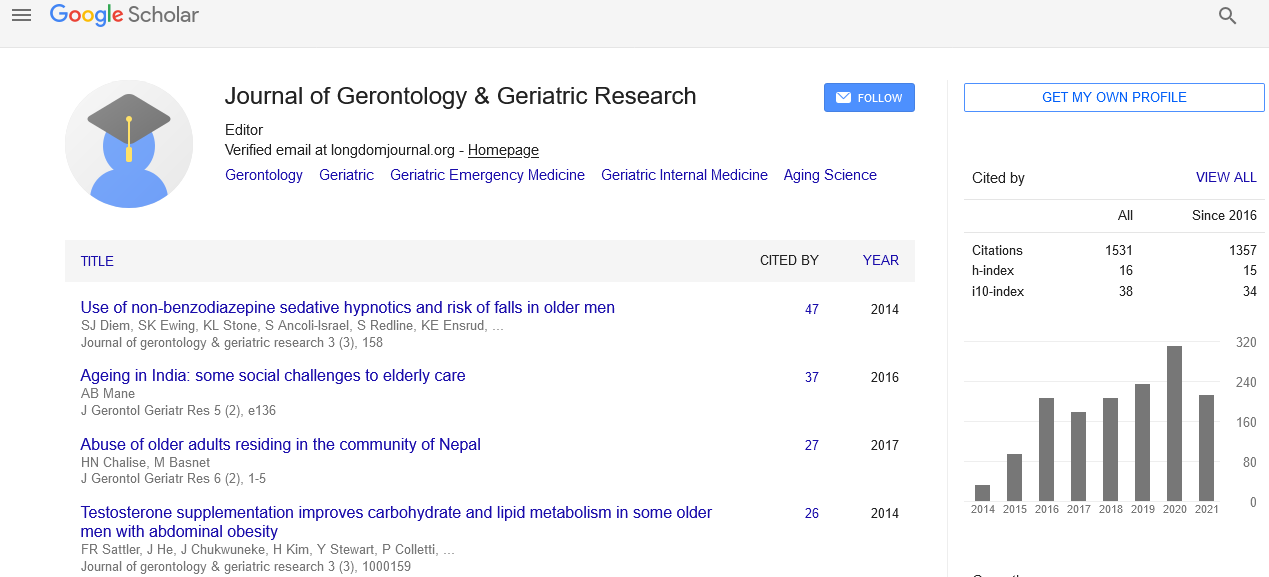PMC/PubMed Indexed Articles
Indexed In
- Open J Gate
- Genamics JournalSeek
- SafetyLit
- RefSeek
- Hamdard University
- EBSCO A-Z
- OCLC- WorldCat
- Publons
- Geneva Foundation for Medical Education and Research
- Euro Pub
- Google Scholar
Useful Links
Share This Page
Journal Flyer

Open Access Journals
- Agri and Aquaculture
- Biochemistry
- Bioinformatics & Systems Biology
- Business & Management
- Chemistry
- Clinical Sciences
- Engineering
- Food & Nutrition
- General Science
- Genetics & Molecular Biology
- Immunology & Microbiology
- Medical Sciences
- Neuroscience & Psychology
- Nursing & Health Care
- Pharmaceutical Sciences
EXPLORING THE FACETS OF SEXUALITY AMONG OLDER ADULTS
5th International Conference on Geriatric Medicine & Gerontological Nursing
November 14-15, 2016 | Atlanta, USA
Vivienne Cloude C. Bersabe, Nuelle Anne Castr, Christy P. Gonzales, Nathalie Ann D. Ocbo, Frances Bea S. Sabatena, Korina Louise A. Saculles, Jada Kristen O. Taska and Don Leonardo N. Dacumos
Saint Louis University School of Nursing, Philippines
Accepted Abstracts: J Gerontol Geriat Res
Abstract:
Objectives: To measure the levels of older adults sexual desire, sexual behavior, and sexual intimacy and relate them to sex, living arrangement, educational level, and presence of chronic illness, whether with or without treatment. Methods: This study is of quantitative descriptive design that utilized purposive sampling. 400 older adults of Baguio City participated. The study used a 30 point researcher-made questionnaire, one-on-one interview and focused group discussion to gather data. Data were treated using weighted mean, t-test, F-test, and Scheffe‚??s test. Results and Conclusions: The overall findings revealed that Filipino older adults have low levels of sexuality expressed by the participant‚??s sexual desire, behavior, and intimacy. Males have significantly higher levels of sexual desire, behavior, and intimacy. Living arrangement does not seem to influence the level of sexuality in all its 3 facets. Sexual desire was significantly higher among those with tertiary education and without chronic illness. Recommendation: It is recommended that nurses carry out their assessment of clients to include the exploration of their sexuality especially the older adults. A similar study may be done to explore other variables like demographic location, i.e., rural or urban setting, socio-cultural factors and functional performance status. It is also recommended that a similar study may be done exploring the different facets of sexuality among homosexual older persons.


